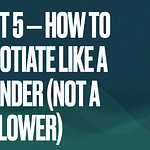In the middle of the Netherlands, a groundbreaking innovation is making waves (pardon the pun) making waves. The Great Bubble Barrier, an ingenious solution to plastic pollution, is capturing global attention for its simplicity, elegance, and impact.
🚨 The Problem: Plastic Pollution in Waterways
Every year, more than 8 million tons of plastic end up in the world's oceans, with an estimated 80% coming from land-based sources, as Urban waste finds its way into rivers and canals, making a one-way journey to the sea.
This isn't just a marine issue it's a human one. Plastic waste kills wildlife, disrupts ecosystems, contaminates food sources, and devastates coastal communities that depend on clean waterways for tourism, fishing, and cultural practices.
🌐 The Cause: Unintercepted Flow of Waste
Our rivers are the major arteries of pollution. These moving bodies of water collect and funnel waste from cities, industry, and human activity directly into oceans. Yet many towns don't have a reliable method of intercepting plastics once they enter the water system.
💡 Why This Problem Is Worth Solving
Solving ocean plastic pollution at the source before it reaches the sea is more practical and effective than cleaning it up afterwards. Ocean cleanup efforts are immense in cost, complexity, and ecological damage.
Prevention is not just better than cure it's critical.
🛠️ The Technology: Simple, Scalable, and Safe
The Great Bubble Barrier uses a diagonal curtain of bubbles to intercept plastic waste in canals and rivers.
How It Works:
A perforated tube is laid diagonally across the riverbed;
Air is pumped through the tube to create a curtain of rising bubbles;
Rising air causes the plastic to rise to the surface, and the diagonal arrangement gently guides it to a catchment system at the riverbank; and
The barrier doesn't obstruct boats or wildlife. Fish can swim through it, and ships can pass over it.
🧰 The Technology Stack
Hardware:
Perforated Rubber Tubing: Rugged, durable tubing laid directly on the riverbed.
Air Compressors continuously pump air to generate the bubble curtain, which is powered by renewable energy.
Catchment System: Collects and stores the intercepted plastic for periodic removal.
Software & Monitoring:
Real-time sensors monitor flow, pressure, and plastic volume.
Data analytics help optimize placement, flow rate, and maintenance schedules.
Remote diagnostics reduce on-site intervention and improve uptime.
💭 Why This Technology?
Non-invasive: Doesn't require heavy infrastructure or dredging.
Eco-friendly: Aerates the water, improving oxygen levels.
Scalable: Works in rivers, canals, harbours—any urban waterway.
User-centric: Designed to work with—not against—existing urban systems.
✅ How It Solves the Problem
The Great Bubble Barrier intercepts plastic waste at its source in rivers. It doesn't need massive cleanup vessels or robotic arms—it relies on physics, innovative design, and community integration. Monthly, thousands of pieces of plastic are prevented from reaching the sea in the Amsterdam pilot alone.
🧪 How the Team Came Up with the Idea
Over drinks, three Dutch friends—Marieke Eveleens, Saskia Studer, and Francis Zoet—noticed how bubbles in their soda rose to the surface. What if that same concept could lift plastic waste from rivers?
Meanwhile, German naval engineer Philip Ehrhorn independently developed a similar idea, using air to intercept debris underwater. When the team found each other through shared networks and a mutual mission, The Great Bubble Barrier was born in 2017.
🔁 Testing and Iteration
2016: Initial concept tested in a Berlin flume lab with a 10-meter prototype.
2017: Scaled-up tests conducted in the Netherlands on the IJssel River.
2019: First full-scale permanent installation in Amsterdam's Westerdok canal.
Ongoing: System optimization through AI-driven monitoring, feedback loops, and design refinements.
Feedback from scientists, engineers, and local authorities informed the design at every stage. Crucially, the system was co-developed with end users and environmental experts.
🚀 Lessons for Startup Founders
This isn't just a story about environmental innovation—it's a startup case study in mission-driven entrepreneurship.
🔍 1. Start with a Real, Urgent Problem
Too many founders fall in love with their solution before validating the problem. The Bubble Barrier team started with a global pain point, not just a cool idea.
Founder takeaway: Spend time in the field. Research deeply. Solve problems that matter.
🤝 2. Collaborate and Cross-Pollinate
Their success came from a multifunctional team that included engineers, marine biologists, sustainability experts, and storytellers—yes, storytellers.
Founder takeaway: Look beyond your domain. Magic often happens at the edges where disciplines meet.
🔄 3. Prototype, Test, Iterate
The team didn't wait until the solution was perfect. The old saying goes, "If you wait for perfection in your product, you have launched too late." They started small, ran pilots, gathered data, and refined continuously.
Founder takeaway: Don't fear imperfection. Build–Measure–Learn is not just a Lean Startup mantra—it's a survival tactic.
🧠 4. Use Simple Tech to Create a Smart System
The core tech is a simple, robust rubber tube and some bubbles. It sounds too simple, but this is a testament to how they applied it to solve the problem. They wrapped it in smart system design, data use, integration, and community buy-in.
Founder takeaway: Complexity ≠ innovation. Simplicity, scalability, and elegance win.
🌍 5. Build a Story-Driven Brand
Their mission isn't hidden behind jargon; it's front and centre. That's why they've won global awards, attracted funding, gained media coverage, and gained public trust.
Founder takeaway: If your startup improves the world, don't be quiet about it. Storytelling is a growth engine.
✨ Final Thoughts
The Great Bubble Barrier shows us that world-changing startups don't always require futuristic AI or VC millions. Sometimes, they need a fresh perspective, a persistent team, and a bubble curtain.
So, to the founders looking for traction, impact, and meaning, start with a problem that keeps you up at night. Solve it with courage, simplicity, and empathy.
Innovation doesn't have to be flashy; it just has to work. It just has to solve the problem, and in doing so, 'value is created'!














Share this post